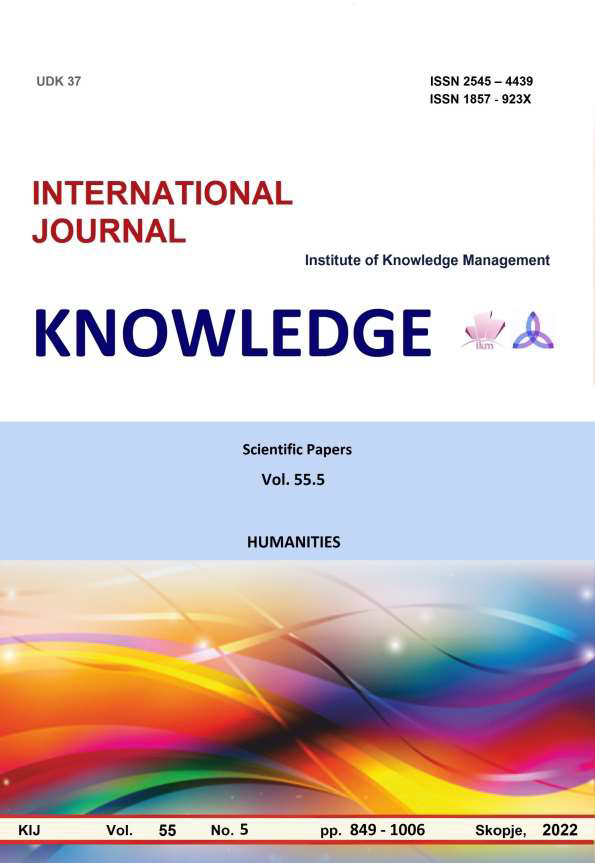EPIDEMICS ON THE MACEDONIAN FRONT (1916-1918)
DOI:
https://doi.org/10.35120/kij55051001vKeywords:
World War I, Macedonian Front, Malaria, Spanish Fever, Sanitation MissionsAbstract
World War I, like the previous two Balkan wars, took place on two fronts on a larger or smaller scale.
One fought fighting on the warfare sides, and the other front was fought with outbreaks of infectious diseases. The
Balkans, especially Macedonia, were also the hotspot of several epidemic waves during these years of war. Starting
with cholera in 1913. military forces and the local population, in the following years of war, almost simultaneously
hit the epidemic of stomach typhoid, feedback fever, damn typhoid, and dysentery. In the wake of the military
actions of the Macedonian Front, malaria was the most dangerous infectious disease in the ranks of all armies, a
disease that was expressed in less or greater intensity in all years of war. Reports of the warred sides' sanitation
reported a large percentage of the sick, but also a high percentage of measles. The victims of the end of the war in
1918. will increase with the appearance of a flu epidemic known as Spanish fever (Spanish flu) that will take a
pandemic scale. A pandemic that will take about 50 million people worldwide between 1918 and 1919, significantly
more than the total number of victims in World War I. The role of the sanitation of the Balkan countries is great, but
also of the large number of foreign missions that dealt with this situation by assisting the military and local
populations.
References
Буловић, Г., Пековић, М., & Станковић, Б. (2018). Србија 1914-1918 Санитет, Нови Сад.
Димитријевић, Б. (2018). Казивања лекара о Великом рату, Београд.
Енциклопедија. (1961). Лексикографски завод 5, Загреб.
Кривошејев, В. (2020). „Шпанска смрт: прилог проучавања пандемије шпанске грознице у Србији“,
Култура полиса бр. 42, година XVII.
Кривошејев, В. (2020). Последице пандемије шпанске грознице у Ужицу 1918, Историјска баштина,
бр. 29 Историјски архив, Ужице.
Кујачиќ, Ј. (1929). Нешто о грипу, в.„Здравље“, 33-34.
Микиќ, Д. (2016). Заразне болести у српском народу и војсци током ратова у 20.веку, Београд, 97-99,
-102.
Микиќ, Д., Поповиќ, Б. и др. (2008). Заразните болести и рад српског војног санитета на њиховој превенцији
и лечењу на Солунском фронту 1917-1918 година, Војнисанитетски преглед, Београд, 65.
Недок, А. (2008). Санитет српске војске у пробоју Солунског фронта, Београд, 27-34.
Недок, А. (2022). Српски војни санитет, Прометеј, Нови Сад.
Недок, А. (2006). Рад војносанитетске службе, Београд. 376
Ник, А. (1968). Хисториографија војног санитета југословенских земаља (1912-1919), Акта хисторика,
IX/1-2, 235-237.
Протић, Ђ. (1924). Маларија на Солунском фронту, Историја српског војног санитета, Наше ратно
санитетско искуство, Београд, 436-452.
Петров, И. (2019). Бугарска војска у време Првог светског рата (1914-1918), Војноисториски гласник,
Посебно издање.
Станојевич, Б. (1924). Маларијата на Солнскиот фронт во српската војска 1916/17 и 18 година“, Белград,
,133.
Чернобузов, Н. (1949). Маларија, Београд, 7-13.
Хатон, Л. И. (1971). Моје успомене са солунског фронта 1916-1918. Београд, 304.
Fales, C. (1996). Military Operation Macedonia from spring 1917 to the end of the war. (History of the Great
War Based on Official Documents) Hardcover, 7.
Schede. (1929). Als Arzt in Mazedonien 1916-1918. Bon, 98-134.
Wenyon, C.M., Anderson, A.G., Mclay, K., Hele, T.S., & Waterston, J. (1921). Malaria in Macedonia 1915–1919. J Royal Army Medical Corps, 37: 83-108.





